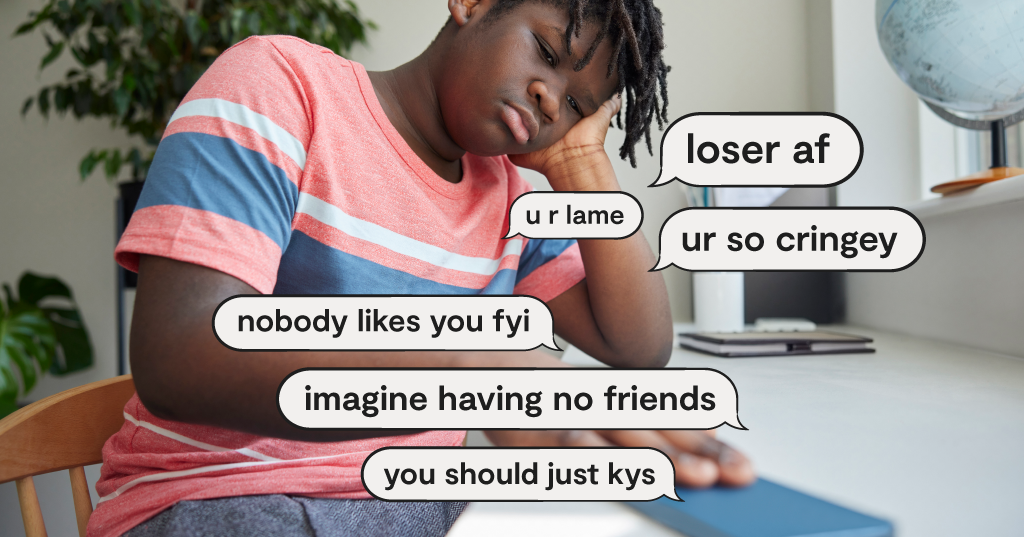Cyberbullying is so common now that we might as well call it “bullying.” More and more studies find alarming statistics of kids who experience some form of cyberbullying or online harassment. As kids today spend way more time online than previous generations, it’s not hard to see why this is. However, as these numbers seem to increase, so does the need to address and prevent cyberbullying among kids of all ages.
But for parents who didn’t grow up with this form of bullying, it can be hard to understand what cyberbullying looks like. Being targeted in a public arena such as social media is uniquely overwhelming and difficult to experience. That’s why we pulled some important and revealing statistics to bring more awareness to cyberbullying and the effect it has on children.
Cyberbullying Statistics Parents Need to Know in 2024
The rate of cyberbullying is increasing every year
The Cyberbullying Research Center has been surveying teens about their cyberbullying experiences since 2016. Their latest study in 2023 found that 26.5% of students said they had experienced cyberbullying within the past 30 days. This compares to 23.2% in 2021, 17.2% in 2019, and 16.7% in 2016. Though seemingly small numbers and slight changes year over year, it is still indicative of an issue commonly shared among many teens.
And teens recognize it too — the Pew Research Center found that 53% of teens believe that cyberbullying is a major problem for their age.
Cyberbullying correlates to depression and suicidal ideation
The reason cyberbullying is so crucial to prevent is because of the severe impact it can have on victims. Tons of studies have found that those who experience cyberbullying are more likely to suffer from depression and report suicidal thoughts and attempts. Sadly, it is all too easy to find stories of kids who took their own lives due to the pressure felt under online harassment.
Cyberbullying takes multiple forms
As diverse as the content online is, so are the ways that cyberbullies can target their victims. The Cyberbully Research Center notes these five forms of cyberbullying:
- Someone posted mean or hurtful comments about me online
- Someone spread rumors about me online
- Someone embarrassed or humiliated me online
- Someone intentionally excluded me from a group text or group chat
- Someone repeatedly contacted me via text or online after I told them to stop
The Pew Research Center has similar categories, plus these four:
- Receiving explicit images they didn’t ask for
- Physical threats
- Constantly being asked where they are, what they’re doing, or who they’re with by someone other than a parent
- Having explicit images of them shared without their consent
Both research institutes found that the most common form of bullying is someone posting mean/hurtful comments or offensive name-calling.
It’s not just in the U.S.— it’s an international problem
The steady increase in cyberbullying is not unique to the U.S. Other countries have similar findings, with one international study finding that nearly one in six adolescents have experienced cyberbullying. Many experts acknowledge that most of the world saw an increase in screen time due to the pandemic. But since then, it appears that as kids have continued to be online for longer, the likelihood of cyberbullying has grown as well.
AI makes cyberbullying even more tricky
Recent reports have seen kids using AI to generate fake, inappropriate pictures of their classmates and then spread them around. Teen girls are having their nudes circulated — when they never even took them. Victims of cyberbullying already experience intense feelings of being out of control and humiliated. But for a teen to have a “deepfake” like this shared with everyone they know only intensifies those feelings.
How Bark Can Help
Oftentimes, when a child is being cyberbullied, they feel too embarrassed to tell their parents about it. And unfortunately, kids are usually really good at knowing how to keep things hidden online. But these are the moments when they need the comfort and intervention of their parents the most.
This is where Bark’s monitoring can help. Bark will scan your child’s texts, emails, and 30+ social media apps looking for harmful content, such as bullying. If this is detected, you’ll receive an alert straight to your phone. This way, you’ll be informed about what your child is experiencing and be able to give the timely support they need. Consider trying Bark’s free 7-day trial today and see how it can give you peace of mind while you and your child navigate their online world.
Bark helps families manage and protect their children’s digital lives.



